Barbican Guide
August 2020
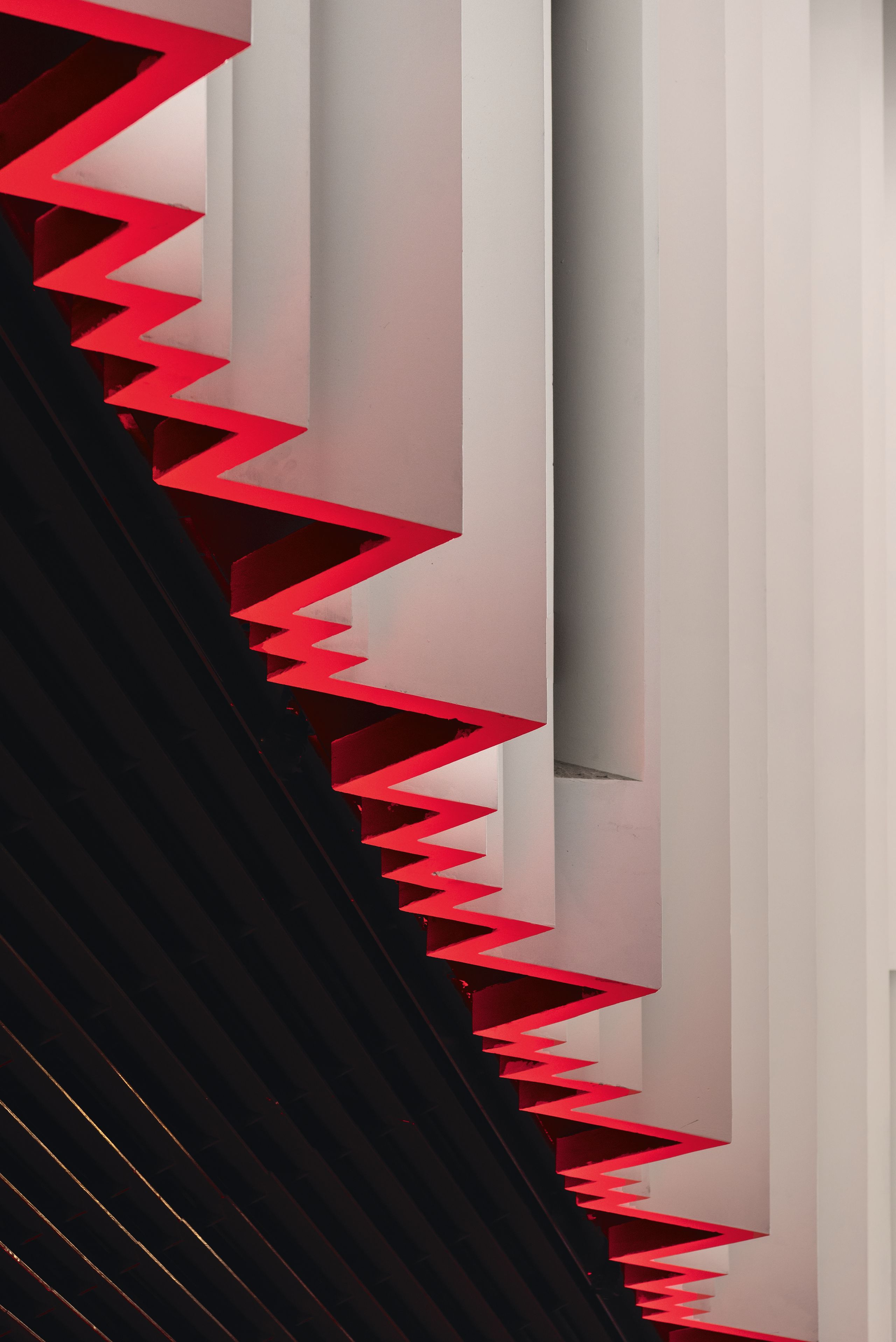
Welcome from our Managing Director
Welcome to our August Guide. It’s wonderful that we can finally start to enjoy culture and creativity together again as the Barbican gradually reopens.
As well as visiting the Conservatory and the exhibitions in our Art Gallery and The Curve, you can enjoy our iconic architecture – our assistant curator Jon Astbury shares some inspiration for your visit in this Guide.
We know that not everyone will be able to join us in person, so we have just launched a Cinema on Demand streaming service, and there’s plenty of entertaining digital content to enjoy on the Read, Watch & Listen section of our website.
We know these are difficult times for many, but if you can, we’d love you to show your support by making a donation. It means we can help more people discover and love the arts.
We look forward to seeing you very soon!
Nick Kenyon, Managing Director

A real box set
Making music with a new generation of artists
‘More than anything, I’m drawn to music with a message,’ says music producer Semothy Jones. ‘And when you listen to these Barbican Box tracks, these young people definitely have a lot to say.’
Jones, who has worked with acts such as One Direction, Little Boots, Wretch32, and Plan B, collaborated with students from seven schools in east London to create a new album of music. The project was part of our Barbican Box initiative, which provides tools and provocations to inspire young people to be creative.
Before the lockdown happened, the teenagers wrote and developed songs alongside mentors, musician Bellatrix and composer Omar Shahryar. They then headed to Jones’s Gain Ctrl studios – a free youth music project in Islington – to record them.
‘I’d try to direct them through the recordings, but there would also be certain times where you’d see the kids take charge among themselves, and give each other feedback, in a supportive way,’ says Jones. ‘Those moments were really exciting: you’d potentially be seeing a future producer in the making!’
The eight songs reflect the students’ feelings, covering issues such as liberty, revolution and society (in response to the Barbican Centre’s recent Into The Night art exhibition), and letting your voice be heard.
Read
Learn more about the making of Barbican Box: the album in our longread, by Arwa Haider.
Watch
Get a glimpse behind the scenes of recording Barbican Box: the album.
Listen
Hear the full album, created by the Barbican Box participants.
The Barbican Box is an initiative run by Barbican Guildhall Creative Learning, which is made possible thanks to donations from people like you. If you can, please consider donating to help this vital work continue.

Illustration by Aleesha Nandhra
Illustration by Aleesha Nandhra
Family Film Club - locked down
While trying to get her kids into a watchlist of great films, Cinema curator Susie Evans finds there’s something important missing.

Once the initial shock of lockdown had passed, my partner and I turned to the logistical mess of caring for two ravenous animals (currently three and six years old), working from home and preserving our sanity. So, with lemons and lemonade in mind, I drew up a list of films that I could finally make time to watch with the kids (once we’d finished with all the home-schooling, feeding, tantrumming and Joe Wicks-ing).
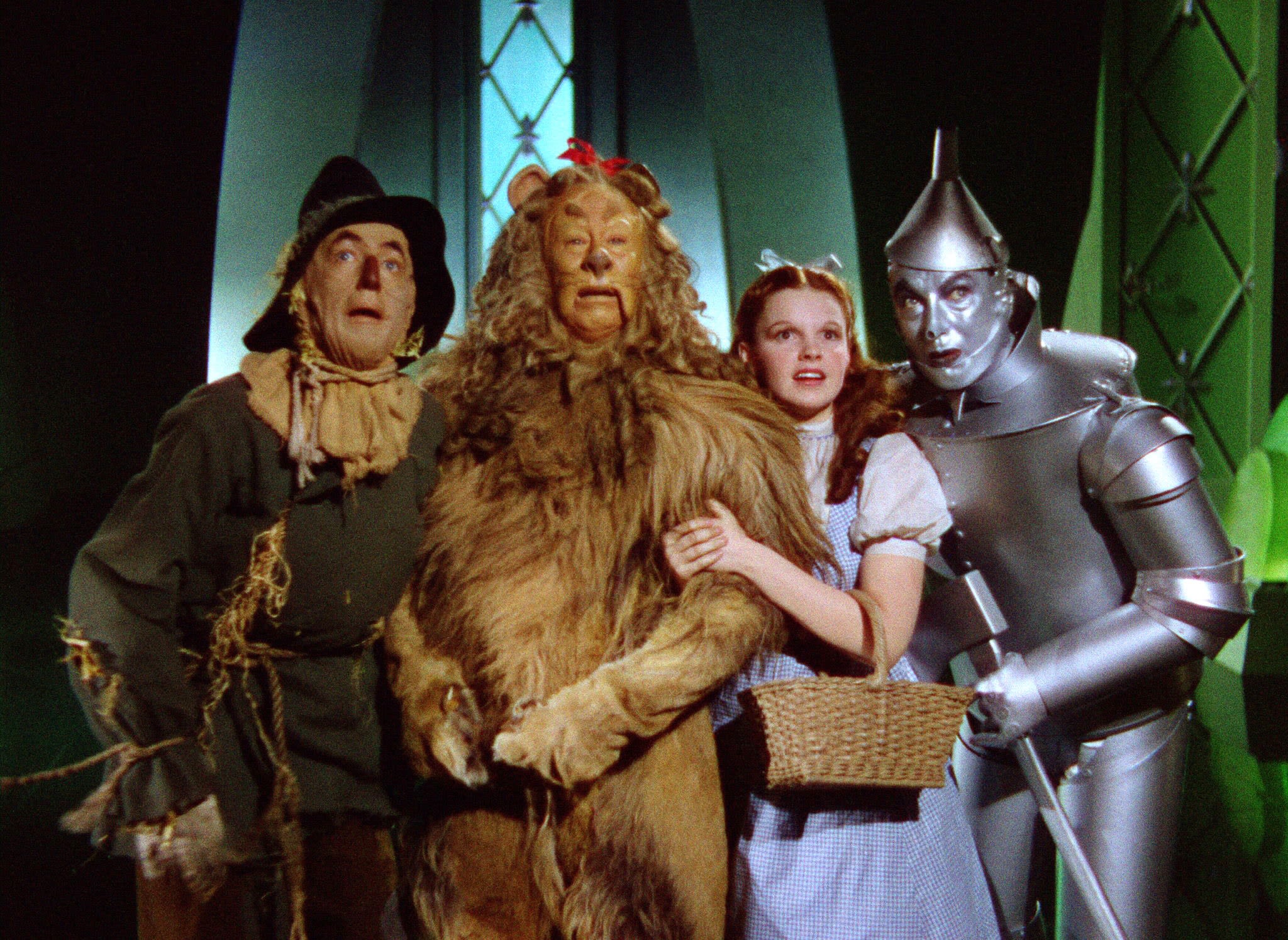
Still from The Wizard of Oz. Courtesy of The Ronald Grant Archive
I had it all figured out: we were going to work through some classics they’d been a bit too young and/or scared of previously – Wizard of Oz, Labyrinth, Willy Wonka and the like. Then move onto a few animations (courtesy of a highly contested Disney+ subscription) – Pinocchio, Snow White, Princess and the Frog were all on our hit list. And then we’d really get to Mummy’s favourites, the Pixar and the Ghibli. Oh, how sweet life would be when we could switch over from Oak National Academy to Monsters Inc. and Up! Or complete our BBC Bitesize lessons to curl up on the sofa with Ponyo and Arietty.

Still from The Jungle Book. Courtesy of The Ronald Grant Archive
There were some early wins: I nearly wept with joy when my daughter requested a repeat viewing of Arietty the day after first watching it. And Up! sparked a ten-minute debate between her and her brother about whether we should buy an electronic collar that could help their cousins’ dog to talk – we agreed as soon as it’s invented, we’ll be pre-ordering.
There were also some epic fails. Like the time my partner’s YouTube feed suggested some ‘Hilarious Animal Videos’ and in a moment of weakness we went with it. For next the five days both kids only wanted the ‘doggy sleep running’ video and the Baby Shark song on repeat. We will not be winning any parenting awards for that week.
But the one thing I noticed was even though my children were enjoying these films, their suspension of disbelief was always a hair’s breadth away from some form of distraction – a toy on the sofa, a bird outside, an uneaten floor raisin.
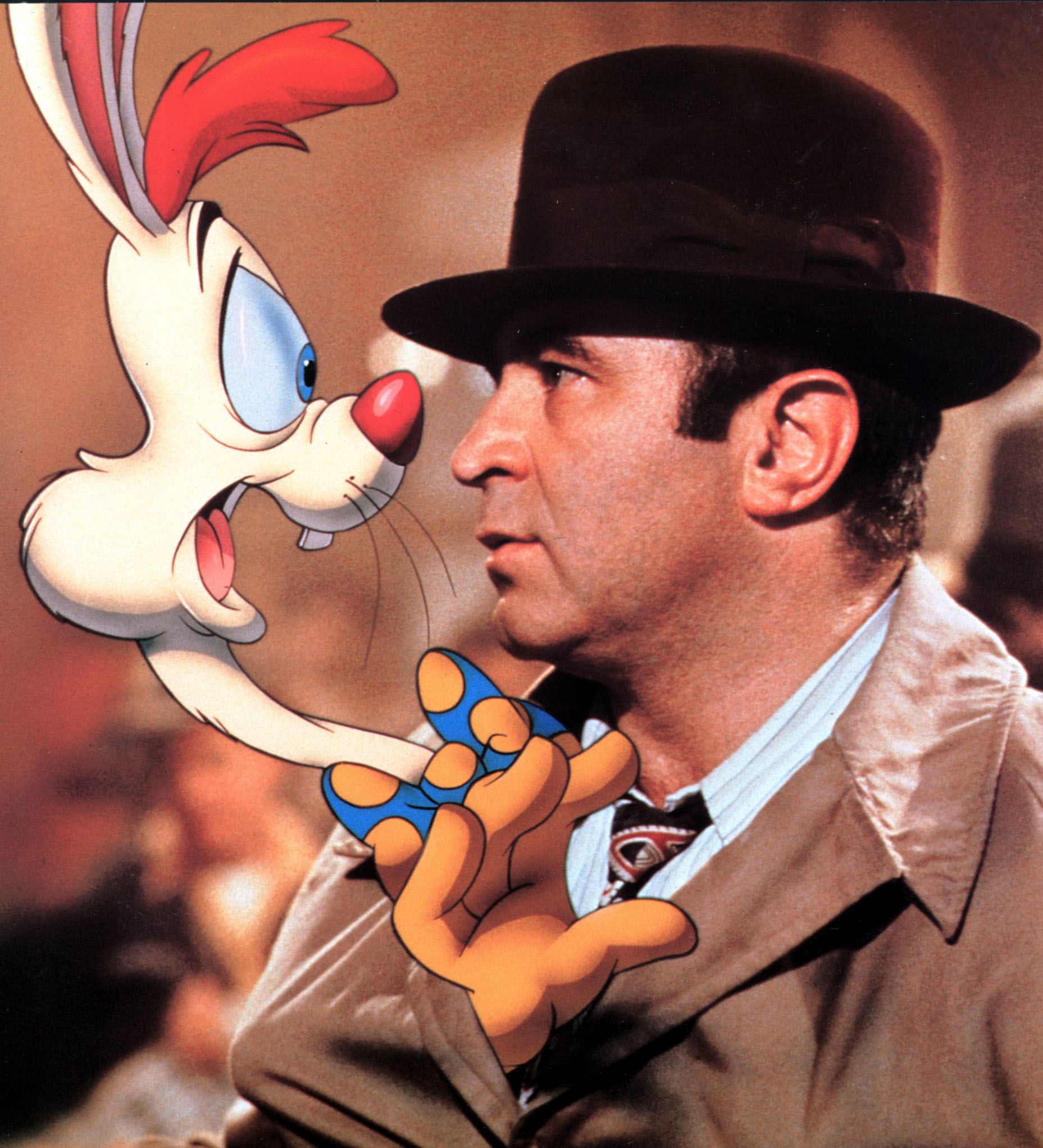
Still from Who Framed Roger Rabbit? Courtesy of The Ronald Grant Archive
I realised that in my haste to fill lockdown with a catch up on ‘important’ films, I hadn’t remembered that these titles really deserved a big screen experience. Going to the cinema when you’re young completely shapes your memory of the films you see. The dark cavernous room, huge sound, characters ten feet high – it all immerses you in an unfamiliar and magical way. I vividly remember seeing Who Framed Roger Rabbit in Barbican’s impossibly grand Cinema 1 and The Jungle Book and Oliver and Company at the majestic Walthamstow Odeon. These are childhood moments that led me to work at the Barbican and forge a career sharing films with new audiences. Was I really going to get my kids to sit through some of the greatest family movies in history just so I could tick them off our watchlist?
But these aren’t perfect times. So, as has been par for the course for many during lockdown, I U-turned on my plan and have increasingly handed over control of the TV remote to my kids. And yes, as you can expect, we’ve had to watch some really awful guff as a result, but we’ve also found some real gems (Hilda on Netflix and Tumble Leaf on Amazon are highlights). We’re still watching a lot of great movies, as well as testing out the content for Family Film Club on the new Barbican Cinema on Demand (ABsolutely Amazing Shorts has been a real hit with my three year old). But we’re saving some of the Big Films for the Big Screen (as well as several repeats). I for one cannot wait for the moment the kids walk back into the auditorium at the Barbican, fidget about in anticipation waiting for the lights to lower and then, when the hush descends, they can dive wholly into another world. But till then, thank goodness for the family treasures to be found online.
More family films for your watchlist?
Browse our collection of watchlists and workshops for the young film fans in your family.
Need some inspiration for activities during the school holidays?

Star in your own show, have fun transforming household items into characters and scenery, and create your own sensory journey with this Activity Book from theatre company, M-SET.

Still from The Wizard of Oz. Courtesy of The Ronald Grant Archive
Still from The Wizard of Oz. Courtesy of The Ronald Grant Archive

Still from The Jungle Book. Courtesy of The Ronald Grant Archive
Still from The Jungle Book. Courtesy of The Ronald Grant Archive

Still from Who Framed Roger Rabbit? Courtesy of The Ronald Grant Archive
Still from Who Framed Roger Rabbit? Courtesy of The Ronald Grant Archive
Our Cinema - in your home
See handpicked films with our new streaming service.

One thing we’ve missed during lockdown is sitting in the cinema, watching films from around the world. While nothing can replace the experience of seeing them on a huge screen, our brand new Cinema on Demand service means you won’t miss movies that have been handpicked by our curators and other organisations we work with.
Featuring the best international films and hidden cinematic gems, independent new release films, exclusive one-off titles, and seasons, the programme changes regularly, just like at the Barbican.
This month the selection includes Papicha (2019), focussing on the lives of a group of women living in Algeria in the 1990s. As they navigate increasing religious and social conservatism, one of the women is met with extreme hostility, when she decides to organise a protest fashion show.

Still from 'Perfect 10'
Still from 'Perfect 10'
Perfect 10 (2019) is the first feature from Scottish writer/director, Eva Riley. The film follows aspiring teenage gymnast, Leigh (Frankie Box) whose life is forever changed by the appearance of the brother she never knew she had.
Socrates (2018) is the debut by Brazilian-American filmmaker Alexandre Moratto and was executive produced by Academy-Award nominated director Fernando Meirelles (The Constant Gardener, The Two Popes) – a gritty tale of the life of the titular teenager who finds himself living on the margins of São Paulo's coast after the death of his beloved mother.
Our Forbidden Colours series features romance Jose (2018), a rare and powerful portrait of gay life in Guatemala. As part of Architecture on Film we have The Proposal, a documentary about an artist recovering the works of architect Luis Barragán from a Swiss bunker.
High tech performance
How technology saved Guildhall School of Music & Drama’s annual opera double bill from disaster.

For decades, the Guildhall School’s annual opera double bill has been a key fixture in its calendar – the culmination of hard work by students and teachers.
This year, it was preparing a 20th-century reimagining of Purcell’s famous Dido and Aeneas, contrasted with Respighi’s La bella dormente nel bosco, a witty take on the Sleeping Beauty story.
But when the Coronavirus pandemic struck, suddenly it looked like the stage would be silent.
‘The initial “oh my gosh” moment became a determination to not let the pandemic beat us,’ says conductor and Head of Opera, Dominic Wheeler. ‘It wasn’t so much about “how can we make a production” as “how do we ensure our students are being educated, developed, trained, and creatively engaged through this process?”.’
So they turned to technology, harnessing the power of cross-departmental collaboration to create the School’s first digital opera. And the results surpassed all expectations.

The production involved more than 100 artists from the Opera, Production Arts, Vocal and Music departments, plus Guildhall Live Events – a new department set up to link the professional creative industries with the School.
Cast and chorus filmed their parts from home, while staff and students from the Production Arts department used high tech 3D modelling to recreate the Silk Street Theatre where the performance was due to take place. Behind-the-scenes work such as construction, costume, lighting, props, scenic art, and sound and video production were translated to the digital world.

Wheeler says with students from 14 different countries, juggling time zones became something of a challenge, not to mention lags on internet connections making real-time music performance almost impossible. But the students rose to the occasion.
‘While there were certainly moments when it was hard, and sometimes tears, there was no moment where students ever felt they didn’t want to make this work – they were determined to see it come to fruition. And the results were better than we could have imagined. When we shared it among friends and colleagues, they were blown away, and we decided to stream the production for free via our website to the public.’
The film of the performance is no longer available to watch, but you can get a feeling for how it looked, in the trailer:
The Long Read
Concrete Facts

Some parts of our Centre are still closed due to the pandemic, but that doesn’t mean you can’t explore the surrounding estate. Few people know their way round better than our assistant curator in architecture and design, Jon Astbury, who’s here with some of his favourite facts and photos to inspire your visit.
Was the Barbican deliberately designed to be hard to navigate?
Not quite. The Barbican’s nature as an elevated island is due in part to the scrapped Pedways scheme, an initiative that once planned to cover the entire City with an incredible network of raised walkways for the Barbican to plug into. With the Barbican’s empty site this was easy to create, but it proved too difficult to retrofit existing buildings with Pedway connections.
Chamberlin, Powell and Bon, the architects who designed the Barbican, claimed to be designing not just buildings but an entire neighbourhood, with a multitude of entrances and exits. If you have a thorough explore of the estate, you’ll discover plenty of routes through, inside and out.
Many of these routes have been changed over the years. The entrance to the Art Gallery was once via the Highwalk, and the main entrance to the Centre was via the Lakeside. These were later reconfigured – while you can still access the centre via the Lakeside, a new main entrance was created on Silk Street to make it far more accessible.
Was the Barbican conservatory really built to hide the Theatre fly tower?
Yes - one of the main drivers for the Conservatory’s location was to conceal the concrete stump of the fly tower used by the Theatre below, which was considered to be unattractive for the residents in the neighbouring Cromwell tower. In early plans, this conservatory space was envisioned inside a giant glass pyramid on the lake.
How was there such a large site in the middle of the City on which to build the Barbican Estate?
Projects at the scale of the Barbican in such a central location happen so rarely for the simple reason of space. Some more extreme Modern architects thought this space should be created by wiping away old cities - the Swiss Architect Le Corbusier, for example, had plans to entirely rebuild Paris. But for the City and the Barbican’s site, the Blitz had already wiped away most of the area once home to London’s cloth trade.
So extensive was the destruction that by 1951 just 48 people were registered as living in the Cripplegate Ward.
My Barbican: Maxine Kwok
The LSO violinist (and Barbican resident) shares her favourite places.
Sculpture Court
I fell in love with the Sculpture Court one spring when I had to pop upstairs from backstage in the rehearsal break to make a phone call. It’s a little haven of quiet and a great spot to grab some sun for a few minutes. It’s really taken on a different aspect now that I’ve seen this photograph of the LSO performing a concert there in the early 80s. I would love for us to have an anniversary of that concert, I think it’s the perfect space for some open-air music-making.
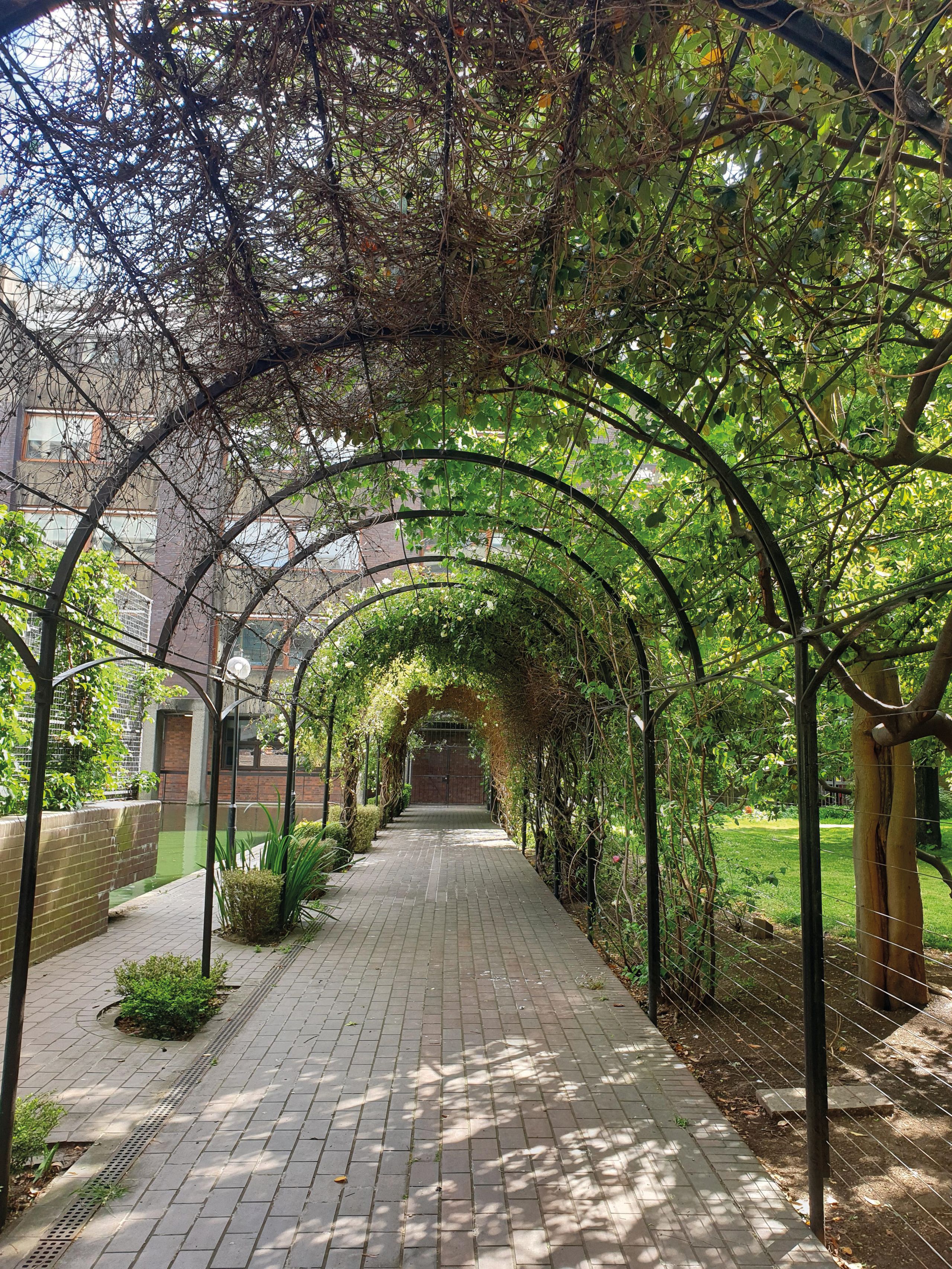
Waterside corridor. Photo: Maxine Kwok
Waterside corridor
This little corridor which links the Residents’ gardens to the Waterside area outside the Centre is special to me. During lockdown I would stand here and watch the carp and ducks milling about. I’m guessing it’s a popular feeding area judging by the wildlife approaching at a rate of knots whenever they sense people approaching. I even caught a heron flying across the entire length of the lake from this vantage point which was a very special moment.
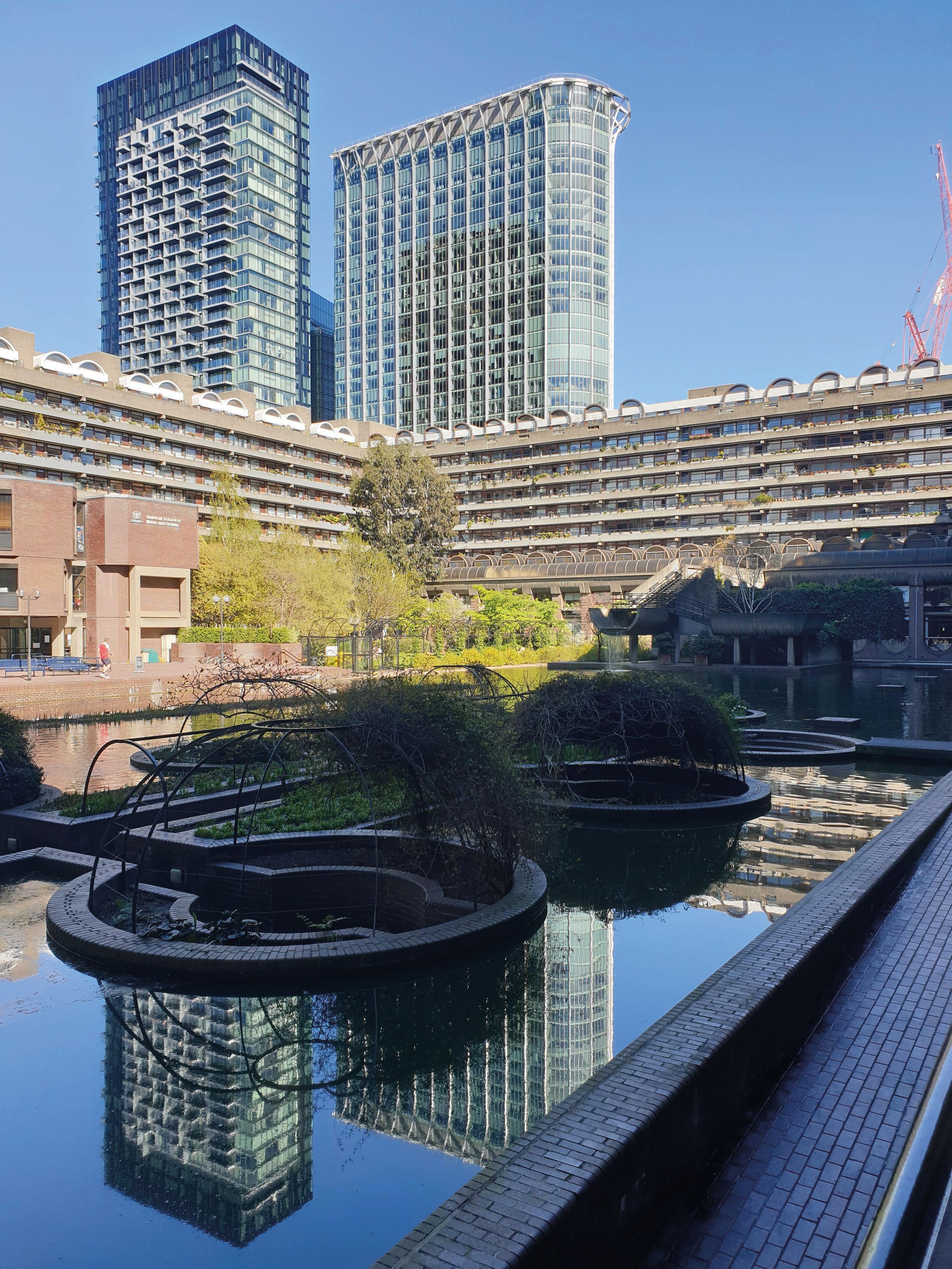
Sunken garden. Photo: Maxine Kwok
Sunken garden
Another residents-only gem, although it can be enjoyed from above the lake on the bridge by any passers-by, is the sunken garden which is opposite the waterside area of the GSMD. It’s is a little shady oasis of calm set into the lake which is perfect with a book and a drink on a sunny day.
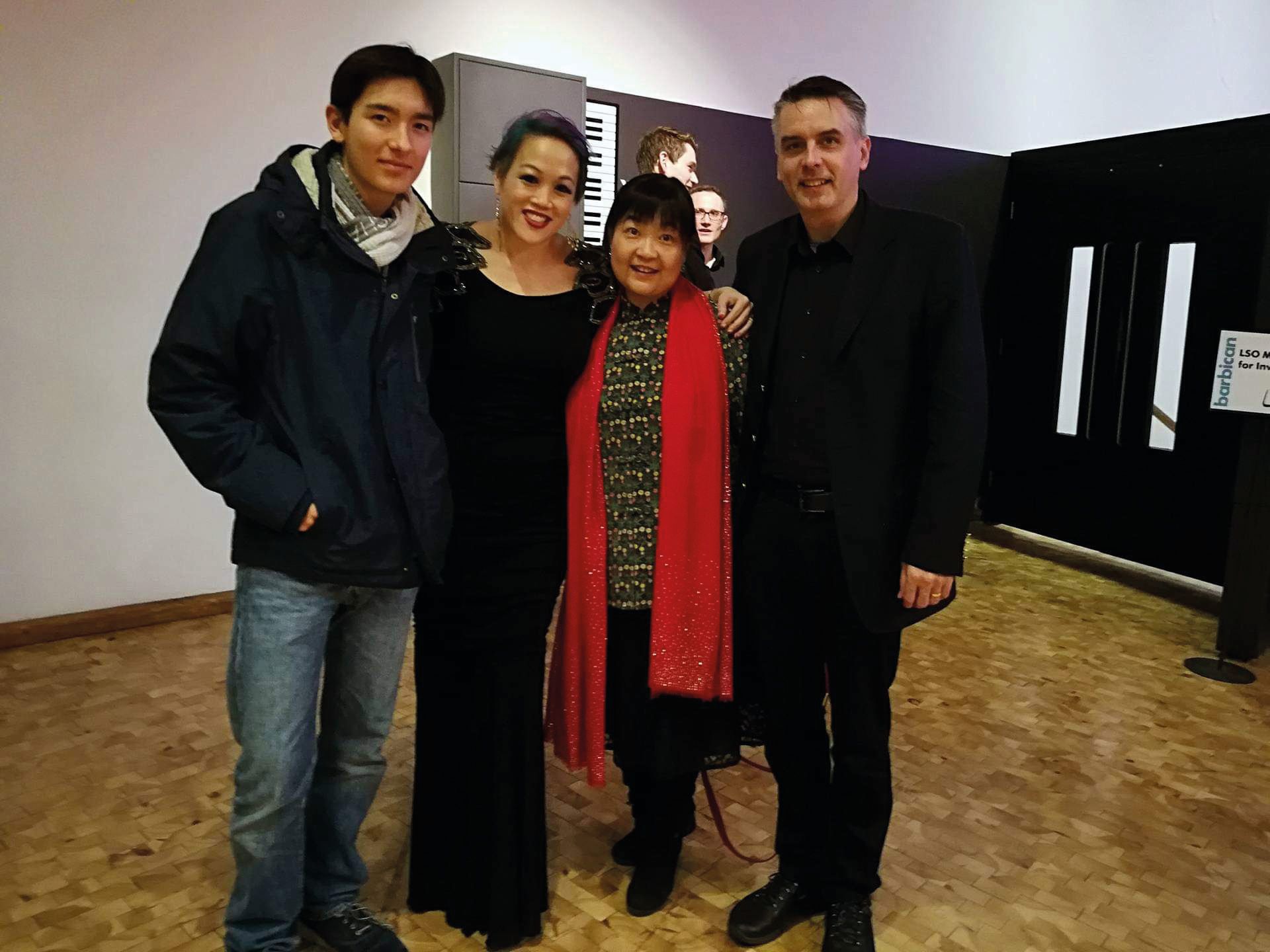
Artist entrance. Photo: Maxine Kwok
Artist entrance/cloakroom
The area between the Cloakroom and the Artist entrance on Stalls level may not look particularly exciting but it’s a special place for me. I’ve stood here so many times and greeted friends and family coming to concerts or even bumped into old friends here who are dashing backstage. It’s the perfect spot for a quick interval ice cream sitting on the banquettes and always makes me feel very proud to be part of something so special when I see people who have come to support the concert.

Archive photo of the London Symphony Orchestra performing on the Sculpture Court. Photo: Peter Bloomfield
Archive photo of the London Symphony Orchestra performing on the Sculpture Court. Photo: Peter Bloomfield

Waterside corridor. Photo: Maxine Kwok
Waterside corridor. Photo: Maxine Kwok

Sunken garden. Photo: Maxine Kwok
Sunken garden. Photo: Maxine Kwok

Artist entrance. Photo: Maxine Kwok
Artist entrance. Photo: Maxine Kwok
New perspectives
This moon shot was captured by Björgvin Sigurðarson (@bjorgvinsigur), one of our Instagrammers in Residence. They found themselves early for a theatre rehearsal at the Barbican and went for a twilight walk around to look at the buildings. ‘I noticed the moon was split in half, and as I walked past this building the sharp corner seemed to connect with the moon in shape and shadow,’ says Sigurðarson. ‘So I took a few photographs. With this one, a bird flew by just at the right time, adding the final element.’
Support the Barbican
We rely on ticket sales and your enduring support and generosity to be able to present and share our programme with you and thousands of others. We’re all finding ourselves in completely new territory, which presents a real financial challenge for us and for those we work with. So, if you’re able, please consider donating to us so we can keep investing in the artists and organisations that help make this place what it is. Please also consider donating to our artistic residents and associates to support them through these difficult times.
What's On
We're starting to reopen following government guidance, and can't wait to welcome you back. Your safety is of the utmost importance, so not all types of events are taking place, but you can see what's coming up later in the year on our website.

With thanks
The City of London Corporation, founder and principal funder
Centre Partner
Christie Digital
Major Supporters
Arts Council England; Esmeé Fairbairn Foundation; Sir Siegmund Warburg’s Voluntary Settlement; The National Lottery Heritage Fund; Terra Foundation for American Art; UBS; Wellcome
Corporate Supporters
Aberdeen Standard Investments; Allford Hall Monaghan Morris; Audible; Bank of America; Bloomberg; Calvin Klein; CMS; DLA Piper; Howden M&A Limited; Leigh Day; Linklaters LLP; National Australia Bank; Natrium Capital Limited; Newgate Communications; Pinsent Masons; Slaughter and May; Sotheby's; Taittinger Champagne; tp bennett; UBS
Trusts & Foundations
The 29th May 1961 Charitable Trust; The John S Cohen Foundation; SHM Foundation; Jonathan Ruffer Curatorial Research Grant from the Art Fund; Embassy of the Kingdom of the Netherlands
We also want to thank Barbican Patrons, donors to Name a Seat, Members, and everyone who has supported the Barbican by making a donation.
To find out more, visit barbican.org.uk/supportus or email [email protected]
The Barbican Centre Trust, registered charity no. 294282